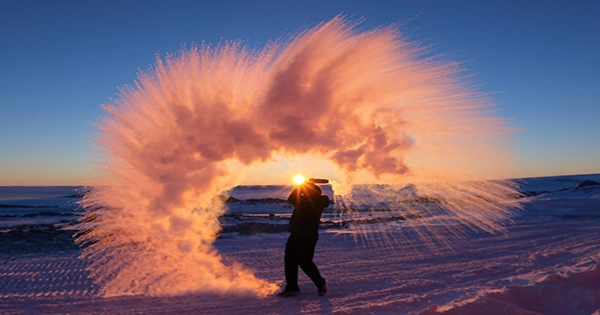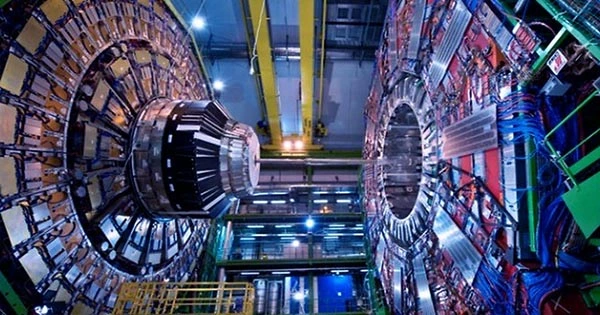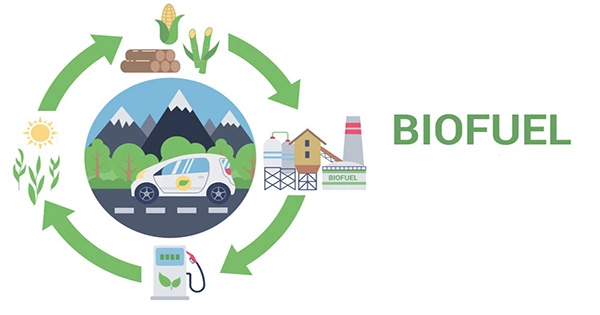When you put ice on a heated metal plate, it melts quickly and leaves you with no ice. Scientists have discovered, however, that before it vanishes, the ice causes unanticipated events to occur at the point where hot and cold collide. This research could lead to improved metal tempering techniques and, in the worst-case scenario, the prevention of a nuclear disaster. If you sprinkle water droplets on an object that is much above the boiling point of water, they will dance around for a time instead of rapidly converting to vapor, skating frictionlessly across the surface.
The Leidenfrost phenomenon, which has been known since 1751, manifests itself in a variety of ways, including liquid nitrogen on room temperature surfaces, screaming hydrogels, and (arguably) firewalkers walking across hot coals without injury. Dr. Jonathan Boreyko of Virginia Tech and then-undergraduate student Daniel Cusumano were intrigued by Leidenfrost’s icy boundaries, which included a solid block of ice replacing liquid water. They publish their findings in the journal Physical Review Fluids, which could be both useful and surprising.
The Leidenfrost effect occurs when a liquid in contact with a heated surface boils with vapor trapped behind it, insulating the rest of the droplet because gas conducts heat significantly more poorly than liquid. Surprisingly, it causes water drops to last much longer on a very hot metal plate than on one that is only slightly above 100o C (212o F), where the effect has yet to take effect. “We wanted to ask the question regarding levitating ice because there are so many publications out there about levitating liquid,” Boreyko said in a statement. “It began as a speculative project. Our research was motivated by the desire to see if a three-phase Leidenfrost phenomenon could be achieved using solid, liquid, and vapor.”
Cusumano used slow-motion cameras to photograph the melting of an ice cube on a 150° C (302° F) aluminum plate, discovering that it did not float like a water drop. Instead, the water quickly boils as it melts. However, as Cusumano increased the temperature, he discovered that even ice may experience the Leidenfrost effect – the temperature just had to be much higher. Temperatures of roughly 550o C (1022o F) were required for an aluminum plate, though this can vary slightly depending on the metal employed.
Mojtaba Edalatpour, a graduate student, took over the investigation and attributed the surprising findings to heat transfer within the meltwater layer. The temperature of the water is maintained at 100o C where it is exposed to the plate (anything hotter boils), but it must be close to 0o C when it is exposed to the ice. “What happens in the water has changed because of the temperature differential that the ice is specifically creating across the water layer,” Boreyko added. “To sustain that significant differential, the majority of the heat from the hot plate now has to travel over the water.” As a result, only a small portion of the energy may be utilised to make vapor.”
The vapor cannot form a cushioning layer since it is so little. Ironically, because the boiling process slowed at first, the ice melts faster, resulting in more boiling. Heat only enters the water quickly enough to boil it rather than transfer upwards at severe temperatures.
The discovery could provide scientists who employ the Leidenfrost phenomenon in physics demonstrations a new twist, but it also has practical applications. After tragedies like Fukushima, the Leidenfrost effect obstructs efforts to cool nuclear reactors. Ice coolants may be able to get around this. When metal tools cooled too slowly after shaping, they become brittle, therefore quick quenching has been a concern since the Iron Age. People have developed legends about swords that are stronger than regular steel for millennia, and ice baths may be the key to making them a reality.
















